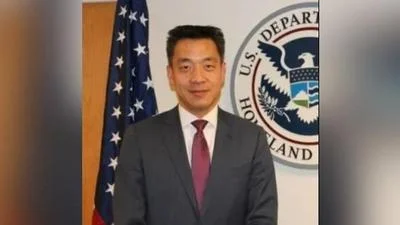Mayor Brandon Johnson | Mayor Brandon Johnson (https://www.chicago.gov/city/en.html)
Mayor Brandon Johnson | Mayor Brandon Johnson (https://www.chicago.gov/city/en.html)
CHICAGO – Last week, the Chicago Department of Public Health (CDPH), the Department of Environment, and the Northwestern University Buffett Institute Defusing Disasters Working Group—in collaboration with community partners—released findings from the Heat Watch 2023 Activation Day.
Chicago joined 16 other communities across the United States as part of the National Oceanic and Atmospheric Administration (NOAA) Heat Watch campaign throughout the summer. On July 28, more than 550 Chicagoans signed up to volunteer, with nearly 100 chosen to support 5 community hubs or travel as resident scientists driving three shifts across 29 routes covering all 77 community areas, equipped with specially designed heat sensors from NOAA and CAPA Strategies that recorded temperature, humidity, time, and location.
“Certain populations are more impacted by extreme heat conditions due to existing medical conditions and neighborhood disinvestment. Heat Watch 2023 provides point-in-time data of these differences in communities, so we can begin looking at ways to combat extreme heat, especially among those most impacted,” said CDPH Commissioner Dr. Olusimbo “Simbo” Ige, MD, MPH.
Factors like humidity, tree coverage, air flow, heavy traffic, roads, industrial areas, parking lots, and the density of buildings and concrete all contribute to how intense the heat feels, creating what is known as an urban heat island effect. The final report ultimately used nearly 140,000 data points, with the highest temperature recorded as 99.1° and the greatest temperature difference of 22°.
“The findings from Heat Watch 2023 reaffirm the City’s commitment to addressing climate change through policy and community collaboration,” said Chicago Chief Sustainability Officer Angela Tovar. “As we begin building on existing programs and policies—and as we develop new ones—that support all Chicago residents, we will continue to rely on their input and feedback. We need their voices.”
Based on the information collected by the sensors, the insights shared by community members around how they experience heat in different areas and patterns identified from past data, residents and government decision-makers can begin improving Chicago’s heat safety strategies.
“Heat Watch 2023 was just the beginning,” said CDPH Director of Environmental Innovation Raed Mansour. “While it is just a snapshot of data, this report helps shine a light on heat and its disproportionate impacts so we can look at ways to more equitably support Chicagoans.”
Heat Watch data will now play a key role in the development of a public health-based heat vulnerability index – an effort led by Northwestern University’s Defusing Disasters Global Working Group. The working group brings together community, municipal, and academic partners to address the impacts of climate change on Chicago communities and was established through a unique Idea Incubation Process led by Northwestern’s Roberta Buffett Institute for Global Affairs.
“In the midst of a changing climate, we know that extreme heat events will become more frequent and more severe. Our community-centered collaborative working group seeks to co-create knowledge and identify those most vulnerable to extreme heat so that resilience building efforts reach those most in need,” said Dr. Daniel Horton, a professor of Earth and Planetary Sciences at Northwestern and a co-lead of the Defusing Disasters team. “We hope our efforts will help to prevent future heat-related disasters in spite of the warming climate.”
To learn more and review the full report, visit chicago.gov/coolchi. To learn more about the Defusing Disasters Working Group, visit buffett.northwestern.edu/research/global-working-groups/defusing-disasters.html.
Original source can be found here.





 Alerts Sign-up
Alerts Sign-up